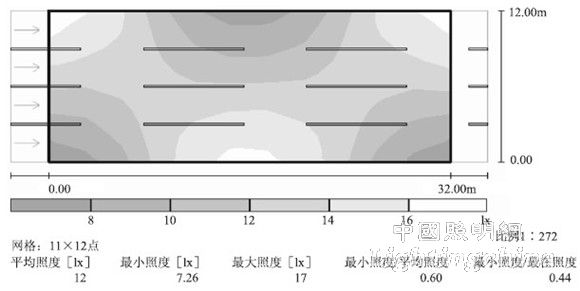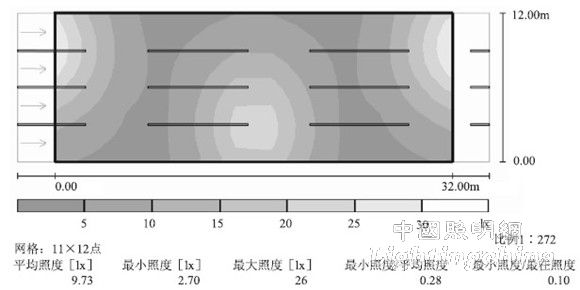0 Preface
In recent years, with the rapid development of high-power and high-brightness LEDs, coupled with the large environmental demand for energy saving and emission reduction, LED street lamps using LED as a new generation of lighting sources are widely optimistic. Compared with traditional road lighting (mainly high voltage) Compared with sodium lamp and metal halide lamp, the main advantages of LED street lamp are: good optical performance, quick start, easy control, high efficiency, power saving, energy saving, reliability, durability and long life. It seems that LED street lights as a sunrise product have a tendency to replace traditional street lamps, but in the actual application process, there are some problems worthy of our consideration. Below I will talk about the following aspects:
1 Optical performance problem
1.1 Light distribution curve problem
One of the main features of LEDs is their good directionality. They can be used for light distribution when the crystal is packaged, and then the whole lamp is then distributed by superimposing a single LED. Because the high-pressure sodium lamp is too large, the light is emitted in all directions, and the light distribution has not achieved a key breakthrough. It can only be distributed through the reflector. This determines the flexibility and advantages of the LED street light. In order to obtain a uniform illumination of the road surface, bat type light distribution is generally used: as shown in the figure, but in practice many LED street lamps use other irregular (such as spindle type) light distribution curves: as shown in the figure: the above two LED street lights Placed in the same environment: road width 12m, four lanes, road width 12m, lamp height 10m, lamp spacing 32m, cantilever length 2m, light spot protruding 1.5m, lamps tilted 15 degrees, two-way staggered arrangement. After simulating separately through the lighting design software Dialux, the iso-illuminance diagram obtained is as follows:

Bat type light distribution curve

Other shape light distribution graph
As can be seen from the above, the illuminance uniformity of the bat-type light distribution curve LED street light is significantly stronger than the irregular type light distribution curve LED street light.
1.2 Calculation of average illumination
Illumination uniformity is a very important indicator in the road lighting standard. There are basically three methods for calculating the average illuminance:
A software simulation
Add streetlight data to the lighting design software library, such as Dialux, and then set the appropriate parameters, such as road width, lamp spacing, layout, pole height, cantilever length, protrusion, angle, etc. Finally, the report calculation can be run. Out of the illuminance map, there is an average illuminance on the map.
B is manually calculated by using coefficients
Formula for calculating the average illuminance of a road: 
Where Φ—the total luminous flux of the light source;
U-utilization coefficient (detected by the utilization coefficient curve);
K—maintenance factor;
N—take 1 when the street lamps are arranged on one side or staggered, and take 2 when the two directions are symmetrically arranged;
S—light street spacing;
W—road width;
For example, a certain road in Shenzhen has a road width of 12m, a lamp spacing of 32m, a lamp height of 10m, an elevation angle of 15 degrees, and a protrusion of 1.5m. The two-way symmetrical arrangement is selected by Shenzhen Sedda Industrial Co., Ltd. SED-GD02 LED street light illumination with a luminous flux of 10272lm. Then calculate as follows: W2 / h = 1.5/10 = 0.15, U2 = 0.08 (check the side of the curve on the side of the utilization coefficient table) W1/h = 10.5/10 = 1.05, U1 = 0.41 (check the side of the road using the coefficient table curve)

Actual point measurement method on the C road
Appropriate points are arranged on the road surface, and the illuminance values ​​of the points are measured, and then the arithmetic mean of the illuminance values ​​is the average illuminance of the road. The range of points taken in the longitudinal direction (along the road) should include the area between the two poles on the same side; in the horizontal direction, the single side of the light should be the entire road width; double-sided staggered lights, symmetrical It can be 1/2 way wide when lighting or centering. There are two methods of taking points: the four-point method and the central method.
Four-point method: divide the measurement section between the two lamp posts on the same side into several rectangular grids of equal size, and set the measurement points at the four corners of each rectangular grid. If M is the number of grids divided in the vertical direction and N is the number of grids divided in the horizontal direction, M·N is the total number of grids. The average illuminance Eav of the four points on the four corners of each grid can represent the assumed illuminance value of the grid, and the calculation formula of Eav is: 
Where Ea is the illuminance of the measurement points at the four corners of the measurement zone;
Eb—the illumination of the points on the outside of the four corners at the four corners;
Ec—The illumination of the measurement points within the four outer sides of the measurement area.
Center method: divide the measurement section between the two lamp posts on the same side into a number of rectangular grids of equal size, and set the measurement points at the center of the grid.
then: 
Where: Eav—the average illumination of the road surface;
Ei—the illuminance value of each measurement point; n—the number of measurement points.

Bat type light distribution curve LED street light and other illumination diagram

Irregular light distribution curve LED street light and other illumination diagram

The key to talking about here is the number of grids. According to the CIE's suggestion: take at least 10 points in the longitudinal direction, the point spacing is ≤ 5m; the horizontal lanes should be divided into 5 equal parts, starting from 1/10 of the left side of each lane, with an interval of 1/5 lanes. In actual use, when the uniformity of the road illumination is relatively poor or the measurement accuracy is relatively high, the number of grids to be divided should be more, that is, the measurement points are densely arranged. When the spacing between the two lamp posts is S≤50m, the spacing S is usually divided into ten equal parts along the longitudinal direction of the road; when S>50m, the equal spacing is divided according to the principle of each mesh side length ≤5m, and the road is horizontally The direction divides each lane into two equal parts (four points method) or three equal parts (center method). When the road surface illumination uniformity is relatively good or the measurement accuracy requirement is relatively low, the width of the lane can be taken as the width of the grid in the lateral direction of the road without re-division.
1.3 Environmental ratio than SR value
When we talk about the application of LED streetlights, one of the advantages mentioned by many people is that they can achieve good uniformity of road illumination according to the characteristics of their light distribution. In fact, in the CJJ45 urban road lighting standard, in addition to the illuminance index and the uniformity index, there is another indicator that has not been noticed, that is, the environmental ratio SR value.
The environmental ratio is defined as the ratio of the average brightness in the area of ​​5 m wide on the roadside to the average brightness in the area within 5 m of the road width. If the road is less than 10 m, it is half the road width. This indicator is designed to allow drivers to be better, more comprehensive, or to get information around the road. Pedestrians see obstacles more clearly, so they must give certain brightness around the road, such as the sidewalk, generally SR>0.5.
This requires LED street lights, in addition to having a certain light-emitting capability in the longitudinal direction (lane direction) (the above-mentioned light distribution curve problem). It should also have a certain ability to project light in the horizontal direction, that is, to use the coefficient problem. In the utilization coefficient curve, a considerable proportion of the luminous flux should fall on the side of the house.
Safety problems LED street lights are equipped with relatively large heat sinks due to the problem of heat dissipation, which directly leads to an increase in weight. The general weight ranges from 14 to 20 Kg, which is closer than the traditional high-pressure sodium lamp (about 10 Kg). above 50. When installed on a light pole, it poses a safety hazard problem, especially in coastal areas where typhoons frequently occur or in northern cities with large winds and sands.
